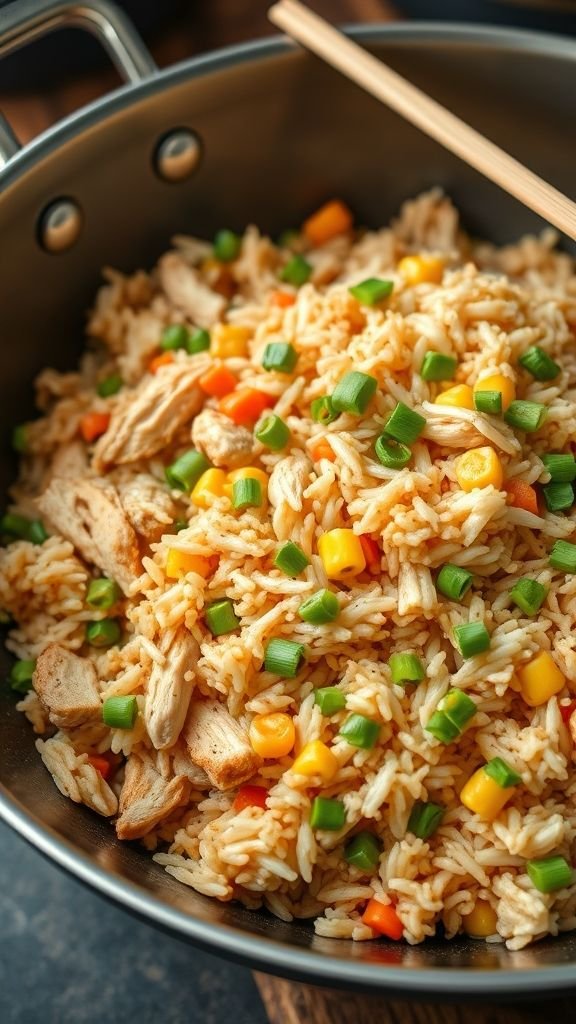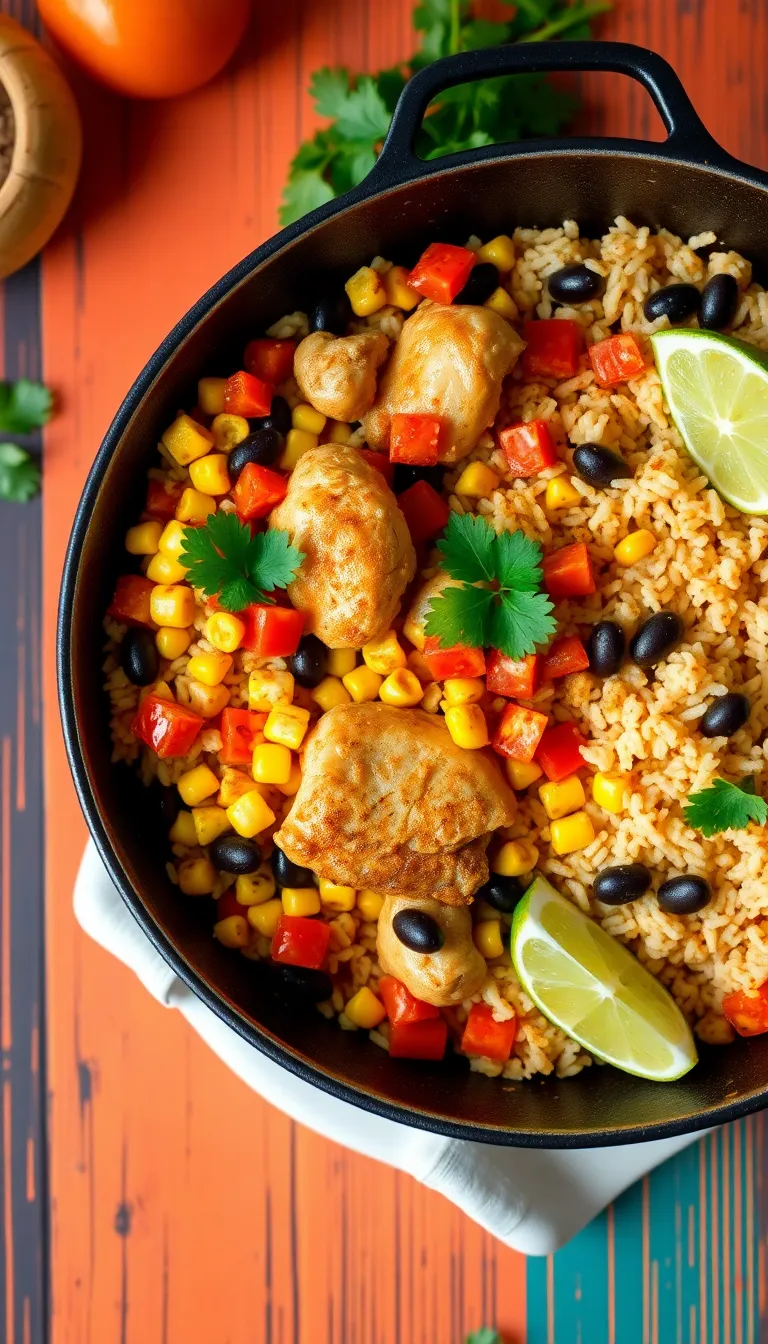When it comes to cooking hearty, flavorful meals, beef roasts are a go-to favorite. Two of the most popular cuts are shoulder roast and chuck roast. While they may seem similar, there are key differences in texture, flavor, fat content, and ideal cooking methods that can significantly impact the outcome of your recipe. In this guide, we’ll dive into everything you need to know about shoulder roast vs chuck roast—from their origins to how to cook them perfectly.
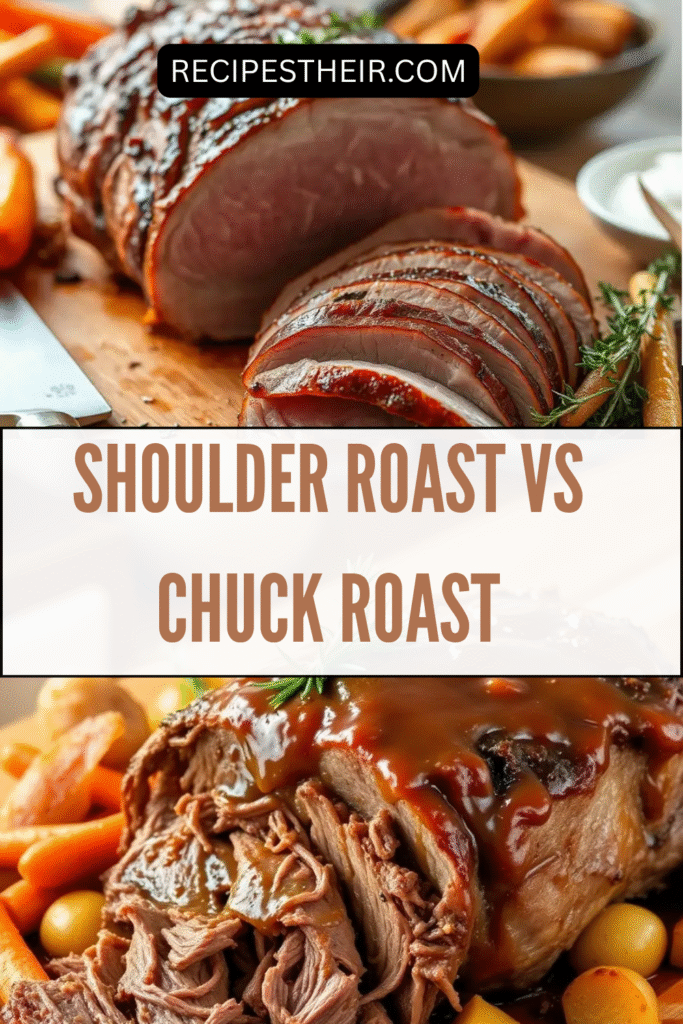
What is a Chuck Roast?
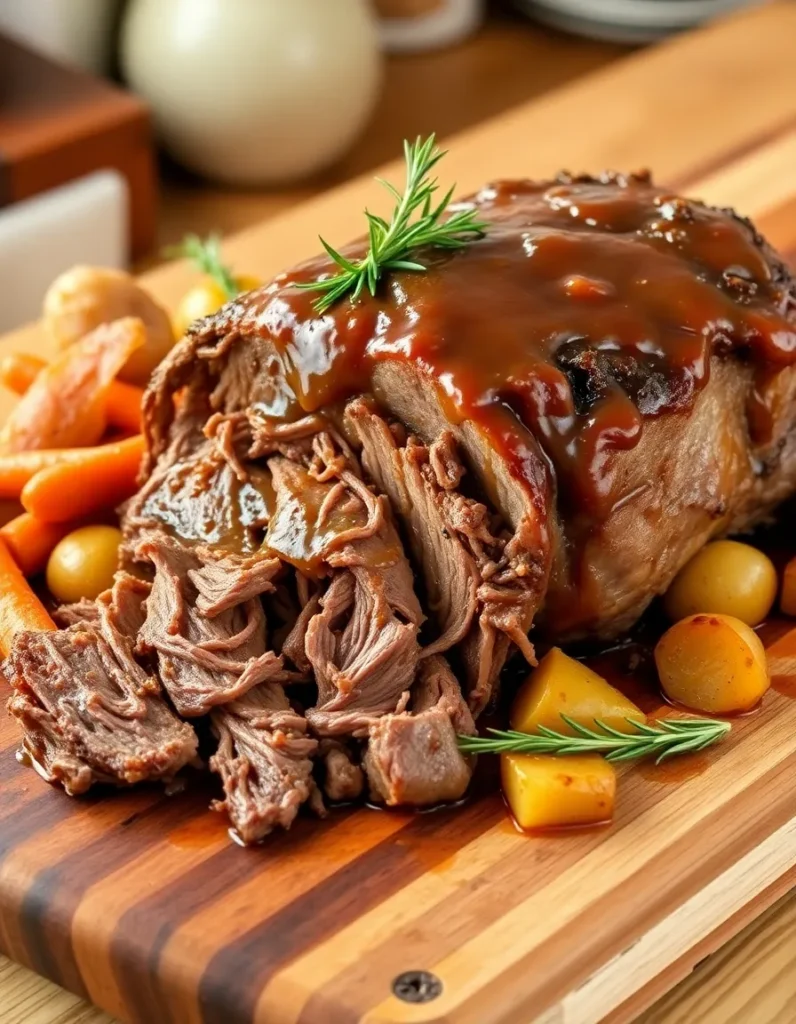
Chuck roast is a cut of beef that comes from the shoulder area of the cow, specifically the upper part near the neck. This region gets a lot of exercise, which means the meat has more connective tissue and fat marbling—two qualities that make it rich in flavor.
Characteristics of Chuck Roast:
- Highly marbled with intramuscular fat
- Tougher than some other roasts, but becomes tender when slow-cooked
- Full of beefy flavor
- Ideal for braising, slow roasting, or slow cooker recipes
Common Names for Chuck Roast:
- Pot roast
- Shoulder cold roast
- Chuck eye roast
- Blade roast
What is a Shoulder Roast?
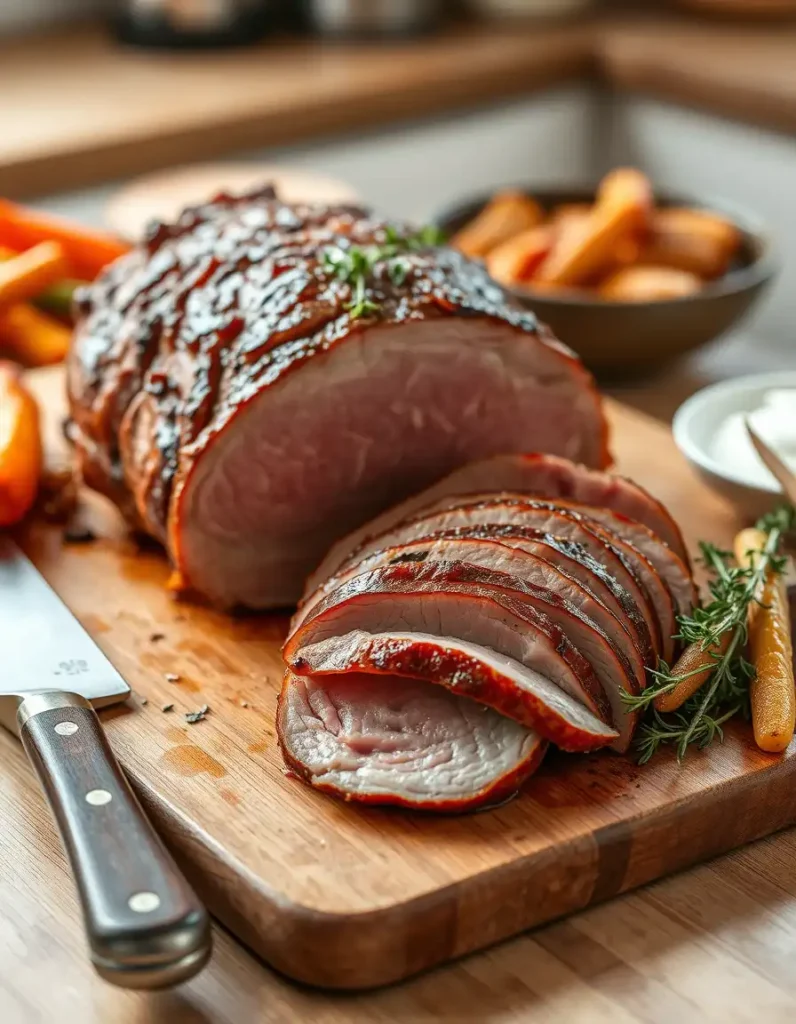
The shoulder roast, sometimes called a shoulder clod roast, also comes from the shoulder area, but it’s slightly lower and leaner than the chuck roast. This cut is firmer, with less fat and a more uniform texture.
Characteristics of Shoulder Roast:
- Leaner than chuck roast
- Less marbling, but still flavorful
- Can be roasted or sliced for steaks or kebabs
- Best cooked with moist heat methods or marination
Common Names for Shoulder Roast:
- Arm roast
- Shoulder clod
- English roast
- Cross rib roast
Shoulder Roast vs Chuck Roast: Key Differences
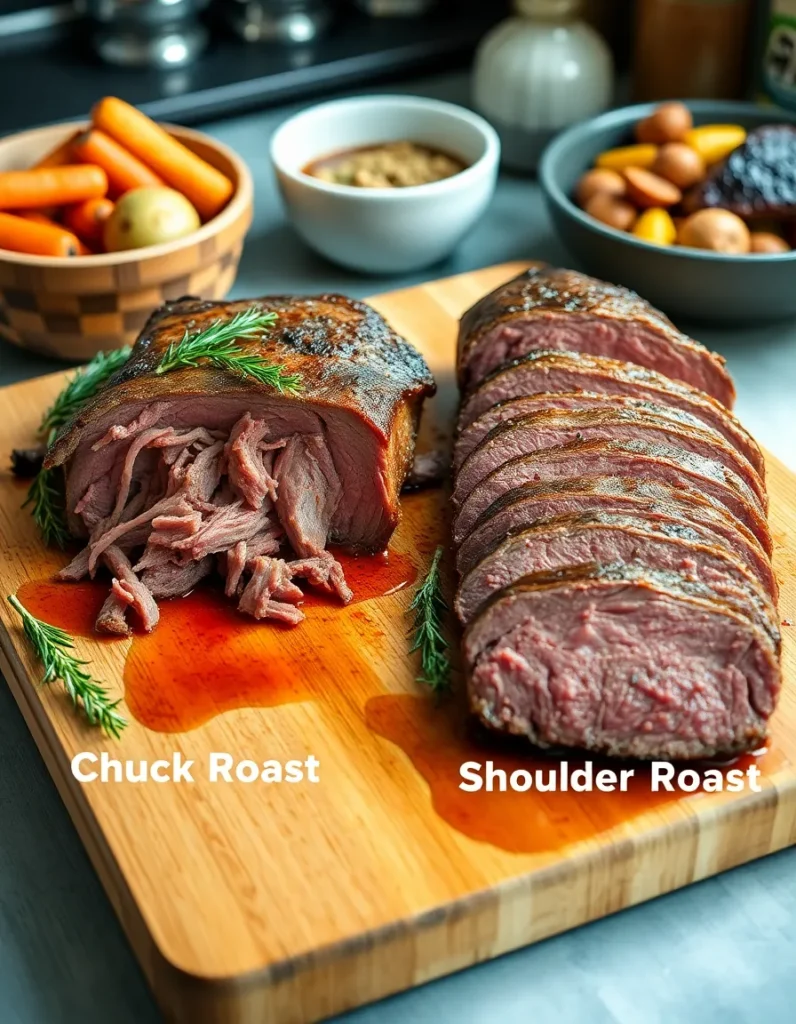
| Feature | Chuck Roast | Shoulder Roast |
|---|---|---|
| Location | Upper shoulder | Lower shoulder |
| Fat Content | Higher | Lower |
| Texture | More tender when slow-cooked | Firmer |
| Best For | Pot roast, shredded beef | Sliced roast, kebabs |
| Cooking Methods | Braising, slow cooker | Grilling (if sliced), roasting, braising |
| Flavor | Rich and beefy | Mild and clean |
Cooking Methods: Which Roast is Right for You?
Choosing between shoulder roast vs chuck roast often comes down to how you plan to cook it. Both can shine in the right recipe, but their textures and fat levels lend themselves to specific techniques.
Chuck Roast Cooking Ideas
- Classic Pot Roast: Braise with broth, carrots, onions, and potatoes for a melt-in-your-mouth Sunday dinner.
- Shredded Beef Tacos: Cook slowly in a pressure cooker with spices, then shred for tacos or burrito bowls.
- Beef Stew: Cut into cubes and simmer in a Dutch oven with root vegetables and red wine.
Chuck Roast Tip:
Slow cooking is your best friend. Aim for low and slow temperatures (like 300°F for 3–4 hours) to break down connective tissue and fat.
Shoulder Roast Cooking Ideas
- Roast Beef Sandwiches: Slice thinly after roasting and serve on crusty rolls with horseradish sauce.
- Beef Kebabs: Marinate cubes overnight, then grill for a flavorful and lean dinner option.
- Braised Shoulder Roast: Add broth, garlic, and herbs for a fork-tender centerpiece.
Shoulder Roast Tip:
Use a meat thermometer to avoid overcooking. This leaner cut can dry out if not handled properly—pull it around 135°F–145°F for medium doneness.
Nutritional Comparison
Understanding the nutritional differences between shoulder roast vs chuck roast can also help you decide which one to use based on your dietary goals.
| Nutrient (Per 3 oz cooked) | Chuck Roast | Shoulder Roast |
|---|---|---|
| Calories | ~250 | ~200 |
| Fat | ~20g | ~12g |
| Protein | ~23g | ~25g |
| Iron | High | High |
| Flavor Rating | Rich | Moderate |
Chuck roast contains more fat, making it richer in flavor and higher in calories. Shoulder roast is leaner and often preferred by those looking for a healthier option without sacrificing too much flavor.
Budget-Friendly Tip
Both chuck and shoulder roasts are affordable cuts of beef, but chuck is often cheaper per pound due to its higher fat content. If you’re cooking for a large family or meal prepping, either option provides great value.
Recipes for Chuck Roast and Shoulder Roast
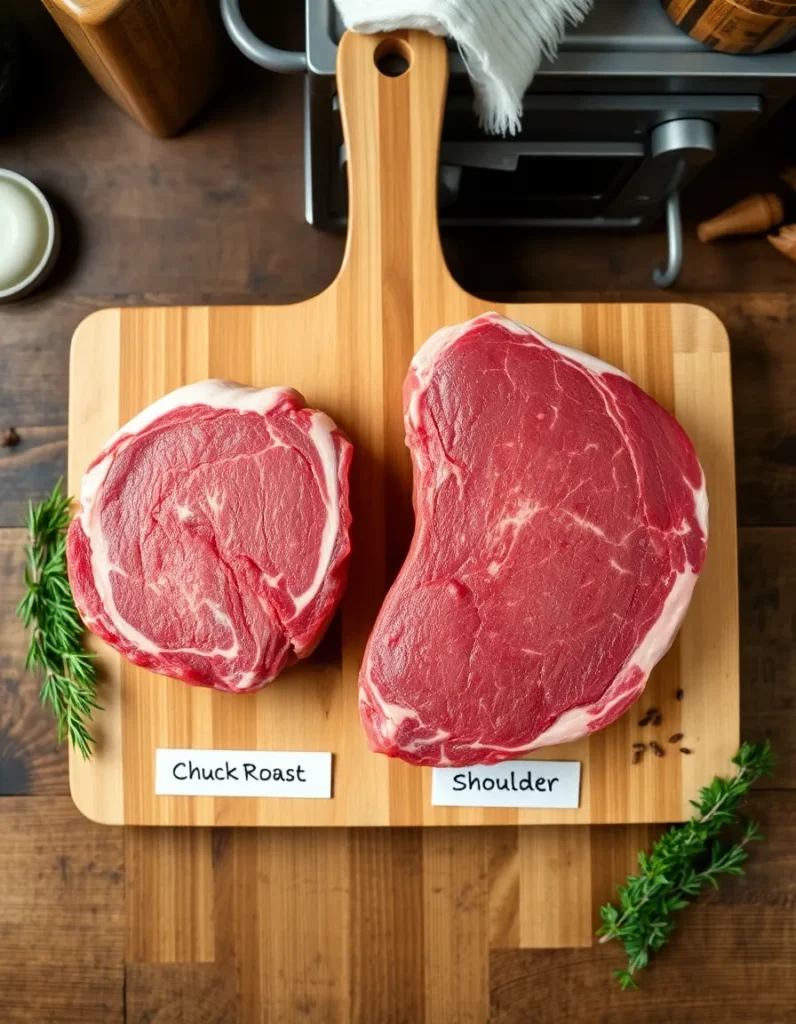
🍲 Chuck Roast Pot Roast Recipe
Ingredients:
- 3 lb chuck roast
- 2 tbsp olive oil
- 1 onion, chopped
- 3 carrots, sliced
- 4 potatoes, quartered
- 2 cups beef broth
- 1 tbsp tomato paste
- 2 cloves garlic, minced
- 1 tsp rosemary
- Salt and pepper to taste
Instructions:
- Preheat oven to 300°F.
- Season roast with salt and pepper. Sear in olive oil on all sides.
- Place in a Dutch oven. Add onion, carrots, potatoes, garlic, tomato paste, and broth.
- Cover and cook for 3–3.5 hours until fork tender.
- Let rest 10 minutes before slicing. Serve with pan juices.
🍖 Shoulder Roast with Garlic and Herbs
Ingredients:
- 2.5 lb shoulder roast
- 3 cloves garlic, minced
- 1 tbsp Dijon mustard
- 1 tbsp fresh rosemary, chopped
- 1 tbsp olive oil
- Salt and pepper to taste
Instructions:
- Preheat oven to 350°F.
- Mix garlic, mustard, rosemary, olive oil, salt, and pepper into a paste.
- Rub mixture all over roast and place in roasting pan.
- Roast uncovered for 1.5 to 2 hours, until internal temperature reaches 135°F.
- Let rest 10 minutes before slicing thinly.
Which One Should You Choose?
Still torn between shoulder roast vs chuck roast? Here’s a quick breakdown to help you decide:
- Choose Chuck Roast if:
- You want juicy, fall-apart beef
- You’re making pot roast, stews, or shredded meat
- Flavor is your top priority
- Choose Shoulder Roast if:
- You prefer leaner beef
- You’re slicing for sandwiches or kebabs
- You’re looking for a roast that holds its shape well
Final Thoughts
When comparing shoulder roast vs chuck roast, there’s no clear winner—it all depends on your recipe and flavor preferences. Chuck roast is rich, fatty, and great for slow-cooked dishes, while shoulder roast is leaner and better for slicing and grilling. Both cuts are budget-friendly and full of beefy goodness when prepared the right way.




